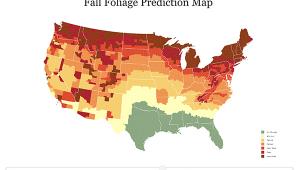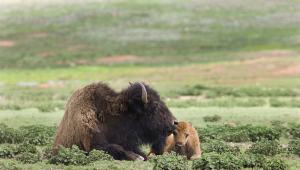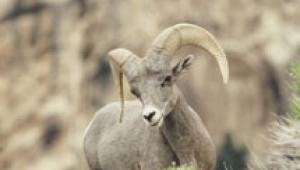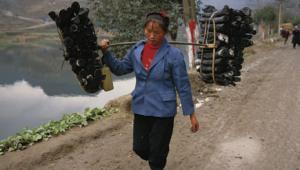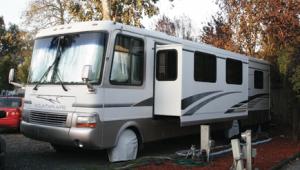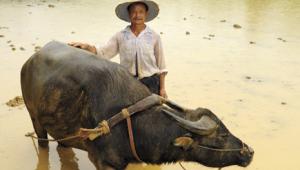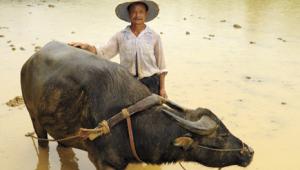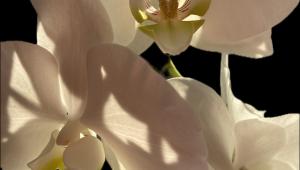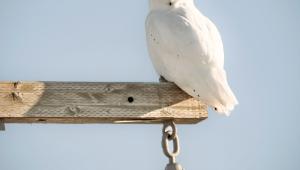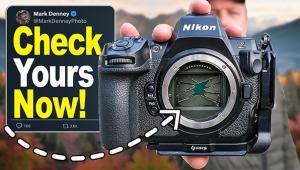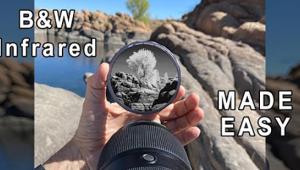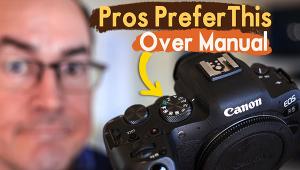In The Wild With Team Husar; A Cause Served With Great Images Page 2
Bald Eagle |
|
 |
|
|
Among Lisa's favorites are the harp seals. "Our first expedition
was to Quebec when I first started photographing professionally," she
says. "Mike gave me the trip for Christmas and it was very special. We
have been back three times and are going again to get new photos and be with
the seals.
"We go in by helicopter to Magdalen Islands and look for the seals. You're
out there with ice, water, and sky and it is beautiful. We find a group of a
few hundred seals and land on the ice, always watching the holes when the mother
seals come up to check on their babies. The mother sniffs the babies and it's
like--okay, that's my pup. They know which of the breathing holes
where their own pup is. Somebody was thinking when all this was designed,"
Lisa says.
Currently the little harp seals are in the news again because of the hunting
controversy in Canada. "It breaks my heart to hear about the hundreds
of thousands of these little fellows that are being hunted each year,"
she says. "Hopefully our photographs will make people more aware and make
some changes.
Harp Seals |
|
 |
|
|
"We know how animals respond. They do feel emotion and spending time
with them you come to appreciate what they have to do to survive. Hopefully
my viewers will feel what we feel through my photographs and realize the benefits
these creatures give us. It is a sad world to see these animals become extinct
and we hope our images will move people to take some action against global warming.
It's the message we are trying to get out."
A little over a year ago the Husars went digital with a Canon EOS-1D Mark II.
Most of their photographs are shot with long lenses. "We photograph polar
bears and cubs with 1000mm plus lenses, either a 500mm with a 2x converter or
a 600mm with a 1.4x converter," Mike says. "When we photograph an
animal like a wolf or a big cat in captivity in a wildlife model setting we
can shoot with a 70-200mm, depending upon where the animal is and what we want
to get.
Grizzly Bear |
|
 |
|
|
"For our Alaskan trip to photograph the grizzly bears we will be using
a 500mm plus and by the end when the bears are comfortable with our presence
we'll use a 70mm lens. We always try to read their body language and what
they are trying to tell us as we come in closer.
"We do use a flash when photographing pandas because of their dark eyes
and black coat. We rarely use flash outdoors--if it looks like we need
a flash, it is too dark and we don't shoot.
"It all depends on what we want the viewer to see," Mike adds. "If
we want to stop action we shoot at a faster shutter speed like 500-1000 but
for a lot of depth of field and no fast-moving animals we photograph slower
with the aperture at f/11 or f/8. The key to wildlife photography is that the
eyes have to be tack-sharp. If they're not, the picture's not worth
anything."
Team Husar |
|
 |
|
|
"Wildlife shooting is all about trial and error and a photographer needs
to know what has to be portrayed in the image and understand his subject. There's
always an element of surprise involved with animals.
"There's no such thing as a normal day," Mike says.
To see more wildlife photos from Team Husar, visit their website at: www.TeamHusar.com.
- Log in or register to post comments
